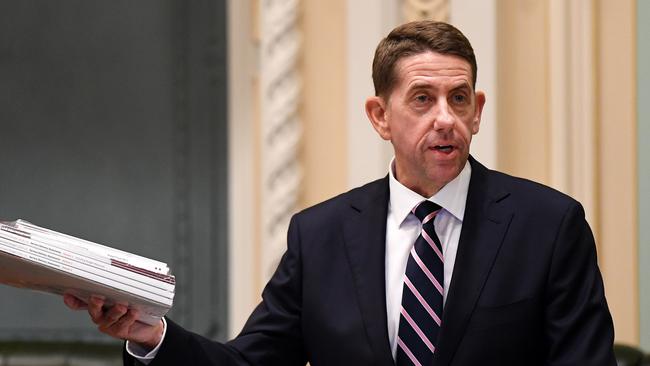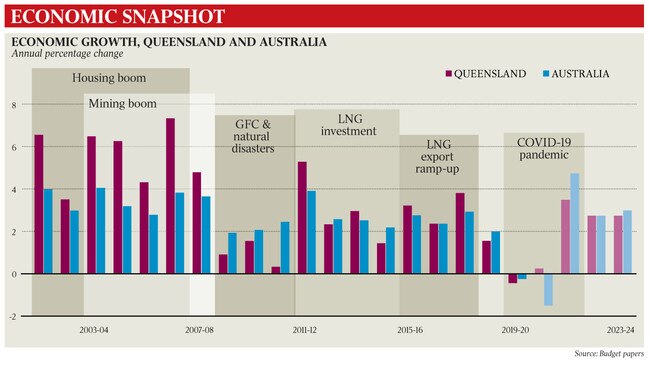Queensland budget: Jobs surge sees fiscal promise broken
The Palaszczuk government has abandoned one of its long-held fiscal principles, scrapping its credo to keep public service increases at or below the rate of population growth.

The Palaszczuk government has abandoned one of its long-held fiscal principles, scrapping its credo to keep public service increases at or below the rate of population growth.
Treasurer Cameron Dick blamed the coronavirus pandemic for the increase in public service jobs, particularly in the health sector, above the government’s stated aim.
The public service of 238,000 has increased by 33,133 full-time-equivalent employees — a 16.6 per cent rise — since 2015 under Premier Annastacia Palaszczuk’s watch, costing the government $26.47bn in wages in 2020-21 and $28.96bn by 2023. In the same period, Queensland’s population has grown by 8.2 per cent, according to Treasury officials.
The increase flies in the face of “principle six” of Labor’s fiscal strategy, tabled in parliament as a requirement of the Financial Accountability Act, which commits to “maintain a sustainable public service by ensuring overall growth in full-time-equivalent employees, on average over the forward estimates, does not exceed population growth”.

Asked why public service expenses continued to rise at the same rate as before the pandemic when the population growth rate had been slashed, Mr Dick said: “We don’t grow the public service at population rate. That’s not going to be the metric that we use as a government.
“It’s certainly not the metric, I don’t believe, you can use in relation growing the health system. Health inflation is higher than population growth and we don’t apologise for that.
“We’re not going to flatten the public service to population growth, we’re not going to do that as a state.”
Mr Dick said the fiscal principles would be “reviewed going forward”. “Growth in the health sector continues to be the biggest driver and we’re going to back our doctors, nurses and allied health workers,” he said.
“Excluding health and education FTEs, growth of FTEs for the rest of the sector remains lower than population growth.”
Mr Dick said Queensland’s growth in employee expenses over the forward estimates — 12.8 per cent — was on par with other states. An additional 6168 full-time public service roles will be added this financial year, raising the employee expenses bill, which accounts for 40.8 per cent of general government sector expenses, by 3.2 per cent ($810m).
This compares with an increase in 2019-20 of 5.4 per cent, or $1.3bn.
The relative reduction in employee expenses growth is driven by a wage freeze for public sector employees designed to offset the impact of COVID-19 measures.

Employees whose wages will increase following the freeze will not be back-paid, meaning the freeze will save the government about $780m over two years, Treasury officials confirmed.
Growth in the health sector will be higher than the rate of population growth, while education and other sectors will be essentially in line with population growth.
Population growth is forecast to drop from 1.5 per cent to 1 per cent and is predicted to remain the same next financial year.
Mr Dick said the pandemic had crippled international and domestic migration rates, but “Queensland will continue to be the destination of choice for international migration”.
“Over the next four years, the federal Treasury … estimates 86,000 people will move from other states to Queensland. That means over 88 per cent of all net domestic migration gains in that time will be in Queensland.”



To join the conversation, please log in. Don't have an account? Register
Join the conversation, you are commenting as Logout